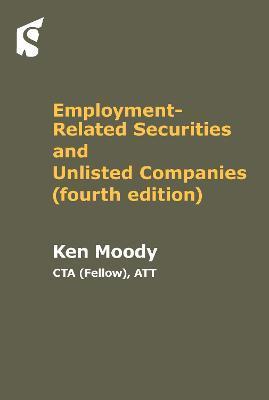Employment Related Securities and Unlisted Companies

Employment Related Securities and Unlisted Companies
- Restricted or convertible securities
- Securities acquired for less than market value
- Securities disposed of for more than their market value
- Post-acquisition benefits connected with securities
Chapter 5 of Part 7 concerns ERS options, while the rest of Part 7 mostly contains the detailed rules relating to awards of shares and share options under the tax-advantaged employee share schemes: SIPs, SAYE options, CSOP and EMI.
A chapter of this work is devoted to each chapter of Part 7, again with the emphasis on unlisted companies where for example the restricted securities rules at Chapter 2 are highly relevant. Of the tax-advantaged share schemes, EMI (Enterprise Management Incentives) in Chapter 5, is mainly used by unlisted companies due to the financial and other limits applicable. Major coverage is therefore given to those chapters of Part 7. However, this work would not be complete without also analysing other tax legislation relevant to ERS and ERS options in general, including:- ERS as general earnings for income tax purposes
- The capital gains rules relevant to ERS and ERS options
- The corporation tax deduction for acquisitions of ERS
- PAYE and NICs aspects
Additional chapters of this work therefore cover those areas in some detail. A review of the decisions of the tax tribunals and courts concerning arrangements or 'schemes', aimed at avoidance of income tax and NICs involving ERS, also seems on-topic and merits a chapter of its own.
Part 7 is in parts complex and confusing legislation, but some understanding of which is essential for professionals advising companies of any size. The detailed commentary in this work aims to provide its target audience with as complete a guide as possible to both the technicalities and the practicalities involved in both the interpretation and the application of the ERS rules.PRP: 576.60 Lei
Acesta este Prețul Recomandat de Producător. Prețul de vânzare al produsului este afișat mai jos.
518.94Lei
518.94Lei
576.60 LeiLivrare in 2-4 saptamani
Descrierea produsului
- Restricted or convertible securities
- Securities acquired for less than market value
- Securities disposed of for more than their market value
- Post-acquisition benefits connected with securities
Chapter 5 of Part 7 concerns ERS options, while the rest of Part 7 mostly contains the detailed rules relating to awards of shares and share options under the tax-advantaged employee share schemes: SIPs, SAYE options, CSOP and EMI.
A chapter of this work is devoted to each chapter of Part 7, again with the emphasis on unlisted companies where for example the restricted securities rules at Chapter 2 are highly relevant. Of the tax-advantaged share schemes, EMI (Enterprise Management Incentives) in Chapter 5, is mainly used by unlisted companies due to the financial and other limits applicable. Major coverage is therefore given to those chapters of Part 7. However, this work would not be complete without also analysing other tax legislation relevant to ERS and ERS options in general, including:- ERS as general earnings for income tax purposes
- The capital gains rules relevant to ERS and ERS options
- The corporation tax deduction for acquisitions of ERS
- PAYE and NICs aspects
Additional chapters of this work therefore cover those areas in some detail. A review of the decisions of the tax tribunals and courts concerning arrangements or 'schemes', aimed at avoidance of income tax and NICs involving ERS, also seems on-topic and merits a chapter of its own.
Part 7 is in parts complex and confusing legislation, but some understanding of which is essential for professionals advising companies of any size. The detailed commentary in this work aims to provide its target audience with as complete a guide as possible to both the technicalities and the practicalities involved in both the interpretation and the application of the ERS rules.Detaliile produsului










